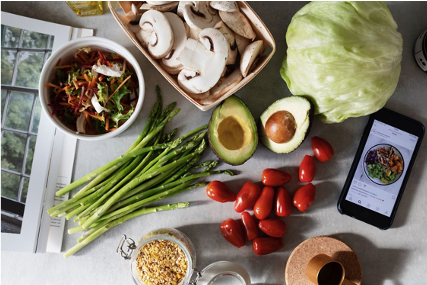

Cooking in solo mode presents several challenges, including a lack of motivation and sometimes unsuitable portions. Here are a few tips to simplify your meals so that everything is tasty and healthy.
Tip number 1: planning!
Meal planning involves planning the purchases and recipes to be made. To save money, you can look at flyers for inspiration. You can also shop in bulk stores to buy only the quantity you need. Shop twice a week and eliminate "just-in-case" purchases as much as possible to limit waste.
Also, plan according to your schedule. For example, target simpler recipes for busy days. Reserve more elaborate cooking for more relaxed evenings. Chop vegetables and fruit ahead of time. If you have some time, cook several meals in advance (meal prep) for the week. You can make it an activity with friends.
Another way to plan meals is to freeze them. Target those recipes that can be frozen (e.g., soups, casseroles, pasta). You can also take shortcuts by freezing cooked meats and poultry. Eventually, it will be possible to use them to make several meals quickly. You can also use frozen vegetables and fruit. They are economical, convenient, nutritious and will prevent you from wasting fresh produce. Most products purchased in larger quantities can also be frozen (e.g. ½ sliced bread). Homemade muffins, cookies and soft bars, and baked grains (rice, quinoa, barley, pasta) freeze very well. This way, you will avoid the monotony of having to eat everything in the same week.
The essentials
In the refrigerator: vegetables, fruit, meat, poultry, fish, eggs, hummus, tofu, milk or fortified soy beverage, yogurt, cheese, cooked grains.
In the freezer: vegetables, fruit, meat, poultry, fish, flax/chia/hemp seeds, cheese, sliced bread, pita, tortillas, baked beans, homemade muffins and cookies.
In the pantry: : canned vegetables (unsalted or reduced in salt), canned fruit (in water), dried fruit, fruit compote (no sugar added), canned fish, legumes, nuts, seeds, milk powder, Tetra Pak® soy beverage, whole grains, whole grain flours, olive and canola oil, nut butters.
Smart tips from our nutritionists
Pre-cut vegetables and fruits (e.g. raw, grated, cubed or mixed salads) are great alternatives that provide variety and save time. Commercially prepared meals can also be interesting if you choose dishes that are low in salt, low in added sugars and low in fat. It is also always possible to improve them by adding vegetables or proteins (e.g. chicken, edamame, legumes).
Even if the challenges are numerous, these tools allow you to increase the pleasure of cooking! It is also essential to take the time to savour every bite, eat at the table in a pleasant atmosphere and avoid distractions!
Références
Healthy eating for one. Isabelle Huot PSST! Familiprix [online] [https://www.familiprix.com/en/psst/healthy-eating-for-one] (page last consulted in september 2019)
La planification des repas, on ne s’en passerait pas! Sauve ta bouffe [online] [https://www.sauvetabouffe.org/2019/01/la-planification-des-repas-on-ne-sen-passerait-pas/] (page last consulted in september 2019)
Manger en solo (oui, ça peut être cool!) Ricardo [online] [https://www.ricardocuisine.com/chroniques/bien-se-nourrir/646-manger-en-solo-oui-ca-peut-etre-cool] (page last consulted in september 2019)
Viens manger! Trucs et recettes rusés. Université de Montréal, Département de nutrition [online][http://cscp.umontreal.ca/nutrition/documents/viens_manger.pdf?fbclid=IwAR3Zy0r_AvV_uHiiKRcGD_QtTu9UC6133vE0kyBPu4NBLrLqUZDFj9JzIAQ ] (page last consulted in september 2019)